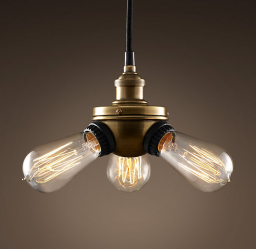Suppose 6
Suppose the life span of a revolutionary light bulb is normally distributed with a mean life span of 70 thousand hours and a standard deviation of 3 thousand hours. If a light bulb is chosen at random:
a) what is the probability the life span will be within 5 5,000 hours of the mean;
b) what must its lifetime be if it is to be categorized in the tallest 5%?
a) what is the probability the life span will be within 5 5,000 hours of the mean;
b) what must its lifetime be if it is to be categorized in the tallest 5%?
Final Answer:

Tips for related online calculators
Looking for help with calculating arithmetic mean?
Looking for a statistical calculator?
Looking for a standard deviation calculator?
Do you want to convert time units like minutes to seconds?
Looking for a statistical calculator?
Looking for a standard deviation calculator?
Do you want to convert time units like minutes to seconds?
You need to know the following knowledge to solve this word math problem:
statisticsbasic operations and conceptsUnits of physical quantitiesGrade of the word problem
Related math problems and questions:
- Lifespan
 The lifetime of a light bulb is a random variable with a normal distribution of x = 300 hours, σ = 35 hours. a) What is the probability that a randomly selected light bulb will have a lifespan of more than 320 hours? b) To what value of L hours can the la
The lifetime of a light bulb is a random variable with a normal distribution of x = 300 hours, σ = 35 hours. a) What is the probability that a randomly selected light bulb will have a lifespan of more than 320 hours? b) To what value of L hours can the la - Bulb life
 Tests show that the lives of light bulbs are normally distributed with a mean of 750 hours and a standard deviation of 75 hours. Find the probability that a randomly selected light bulb will last between 675 and 900 hours.
Tests show that the lives of light bulbs are normally distributed with a mean of 750 hours and a standard deviation of 75 hours. Find the probability that a randomly selected light bulb will last between 675 and 900 hours. - The probability
 The probability that a life bulb will have a more than 682 hours lifetime is 0.9788. The probability that a bulb will have a more than 703 hours lifetime is 0.0051. Find the probability that a bulb will last for more than 648 hours.
The probability that a life bulb will have a more than 682 hours lifetime is 0.9788. The probability that a bulb will have a more than 703 hours lifetime is 0.0051. Find the probability that a bulb will last for more than 648 hours. - Bulbs - short lifespan
 The life of the bulbs has a normal distribution with a mean value of 2000 hours and a standard deviation of 200 hours. What is the probability that the light bulb will last for at least 2100 hours?
The life of the bulbs has a normal distribution with a mean value of 2000 hours and a standard deviation of 200 hours. What is the probability that the light bulb will last for at least 2100 hours? - Normally distributed
 Suppose the height of male youngsters is normally distributed with a mean of 60 inches and a standard deviation of 10. what percentage of the boy's height would we expect to be between 44 and 75, less than 49, and 76 and more?
Suppose the height of male youngsters is normally distributed with a mean of 60 inches and a standard deviation of 10. what percentage of the boy's height would we expect to be between 44 and 75, less than 49, and 76 and more? - The average 7
 The average lifespan for cricket is 90 days, with a standard deviation of 13 days. If we assume that the lifespan of cricket is normally distributed, a. What is the probability a randomly selected cricket has a lifespan of fewer than 75 days? b. What is t
The average lifespan for cricket is 90 days, with a standard deviation of 13 days. If we assume that the lifespan of cricket is normally distributed, a. What is the probability a randomly selected cricket has a lifespan of fewer than 75 days? b. What is t - Entrance exam
 In a college entrance exam, the participants are rated as excellent, very good, good, and fair. Consider that the scores in the exam are normally distributed with a mean of 78 and a standard deviation of 7.5. The participants receiving the top 5% of the s
In a college entrance exam, the participants are rated as excellent, very good, good, and fair. Consider that the scores in the exam are normally distributed with a mean of 78 and a standard deviation of 7.5. The participants receiving the top 5% of the s
